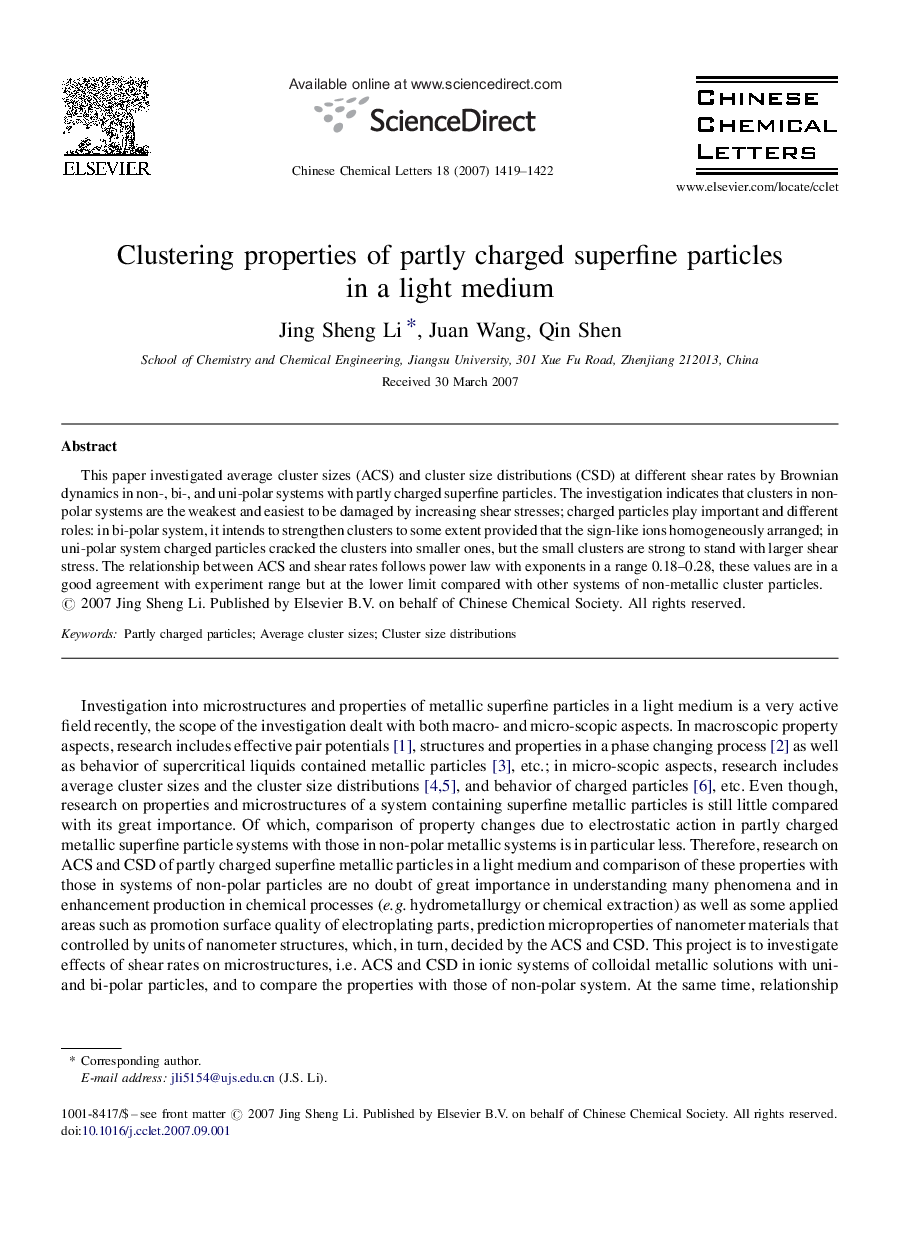| Article ID | Journal | Published Year | Pages | File Type |
|---|---|---|---|---|
| 1256560 | Chinese Chemical Letters | 2007 | 4 Pages |
Abstract
This paper investigated average cluster sizes (ACS) and cluster size distributions (CSD) at different shear rates by Brownian dynamics in non-, bi-, and uni-polar systems with partly charged superfine particles. The investigation indicates that clusters in non-polar systems are the weakest and easiest to be damaged by increasing shear stresses; charged particles play important and different roles: in bi-polar system, it intends to strengthen clusters to some extent provided that the sign-like ions homogeneously arranged; in uni-polar system charged particles cracked the clusters into smaller ones, but the small clusters are strong to stand with larger shear stress. The relationship between ACS and shear rates follows power law with exponents in a range 0.18-0.28, these values are in a good agreement with experiment range but at the lower limit compared with other systems of non-metallic cluster particles.
Keywords
Related Topics
Physical Sciences and Engineering
Chemistry
Chemistry (General)
Authors
Jing Sheng Li, Juan Wang, Qin Shen,
